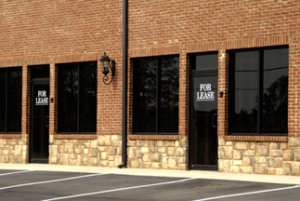The sub-tenant has contractual obligations to you to pay rent to you and to act in accordance with your sub-letting agreement. But you continue to be bound by the terms of the original lease and must ensure your obligations under the lease are complied with, including payments to the landlord and upkeep and care of the property.
If the sub-tenant defaults under the lease, the landlord can seek to recover costs directly from you . And you in turn, will have rights to recover these costs from your sub-tenant.

Subletting part or all of your current rented commercial premises can be a great way to reduce overheads for you and the sub tenant.
Is this different to an assignment of lease?
Yes. An assignment of lease is the transfer of the lease from your name into the name of a new tenant. You are released from all of your obligations under the lease and the new tenant takes over from the assignment date.
When can I use a commercial sublease agreement?
You may be able to sublet all or parts of the premises you are renting to a third party if you are a tenant in a commercial property.
To do this, you will first have to ensure the terms of the original lease allow you to sublet. You may have to seek written permission of the landlord or property owner first, or you may be able to do so without their express consent . In other words, ensure you check the terms and conditions in your lease agreement.
How do I enter into a commercial sublease?
Once you confirm that a sublease is possible under the terms of the original lease (or obtained the landlord’s consent to sublease if not specifically stated in the lease), you’ll need to enter into a Sublease Agreement with the sub-tenant. A good sublease for Commercial Property should set out the rights and duties of each party.
What needs to be stated in the documentation?
The person you enter into the sublease with essentially becomes your tenant. You will have to make sure the terms make it clear who is responsible for what and sets out matters like rent, the length of the sublease, what your duties are, what the tenant’s duties are. All of these issues should be made clear so no one is confused about what their responsibilities are.
Can I sublet parts of the premises?
It may be possible to enter into a sublease agreement for part of the premises only. Again, you’ll have to make sure it is ok with your landlord, but partial subletting may be possible. In these cases, it is even more important to make sure the intentions of all parties are expressed clearly and accurately.
Make sure it is easy to understand
Like any other legal agreement, the new agreement needs to be well drafted, easy to understand and precise. It doesn’t do any good to anyone if it is incomplete or weighed down with draconian terms and conditions that no one seems to understand. You want to make sure all parties involved can understand what their rights and obligations are.
Making sure it states your intentions clearly is the best step you can take when the time for change comes around.
Commercial Property Sublease Agreement Available Here